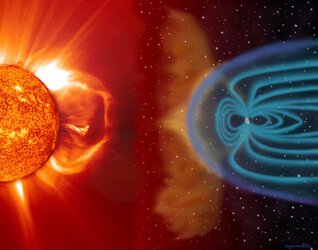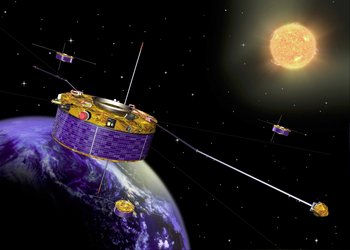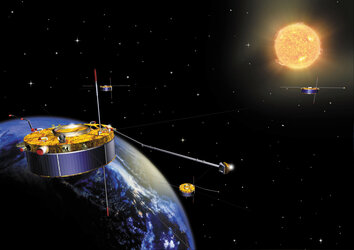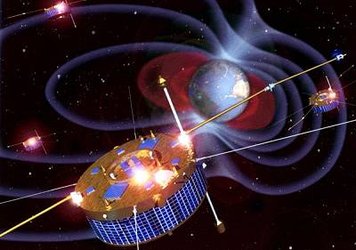Cluster at a glance
Cluster is a constellation of four spacecraft flying in formation around Earth. They are making the most detailed investigation yet of how the Sun and Earth interact beyond sunlight alone. The four Cluster spacecraft work together collecting three-dimensional information about how the perpetual stream of subatomic particles given out by the Sun, the solar wind, interacts with Earth’s natural cloak of magnetism, the magnetosphere.
These interactions can damage satellites in orbit and power stations on Earth. The original operations of the Cluster mission were scheduled to run from February 2001 to January 2003 but, in the absence of any significant hardware problems, a series of extensions have meant that Cluster has now spent a decade passing in and out of our planet's magnetic field, returning invaluable data.
Spacecraft
Each Cluster spacecraft is shaped like a giant disc, 1.3 m high and 2.9 m wide, with a cylinder in the centre. Six spherical fuel tanks are attached to the outside of this central cylinder. The fuel they carried accounted for more than half the launch mass of each spacecraft, although most of it was consumed soon after launch in the manoeuvres needed to reach their operational orbits. In addition, each spacecraft has eight thrusters for smaller orbit changes, which are required to place the spacecraft into the various configurations used for their science.
Also around the central cylinder is the main equipment platform. Electrical power comes from six curved solar panels attached around the outside of the platform. Five batteries are used to supply power during eclipses when the spacecraft enter Earth's shadow. Recently, to conserve the limited lifespan of the batteries, Cluster has been put to sleep during eclipses.
Rod-shaped booms opened out on each spacecraft once they reached orbit to provide two antennas for communications and two for sensors. In addition, four wire booms extended more than 40 m to measure the changing electrical fields around the spacecraft.
The individual spacecraft are called Samba, Tango, Rumba and Salsa.
Journey
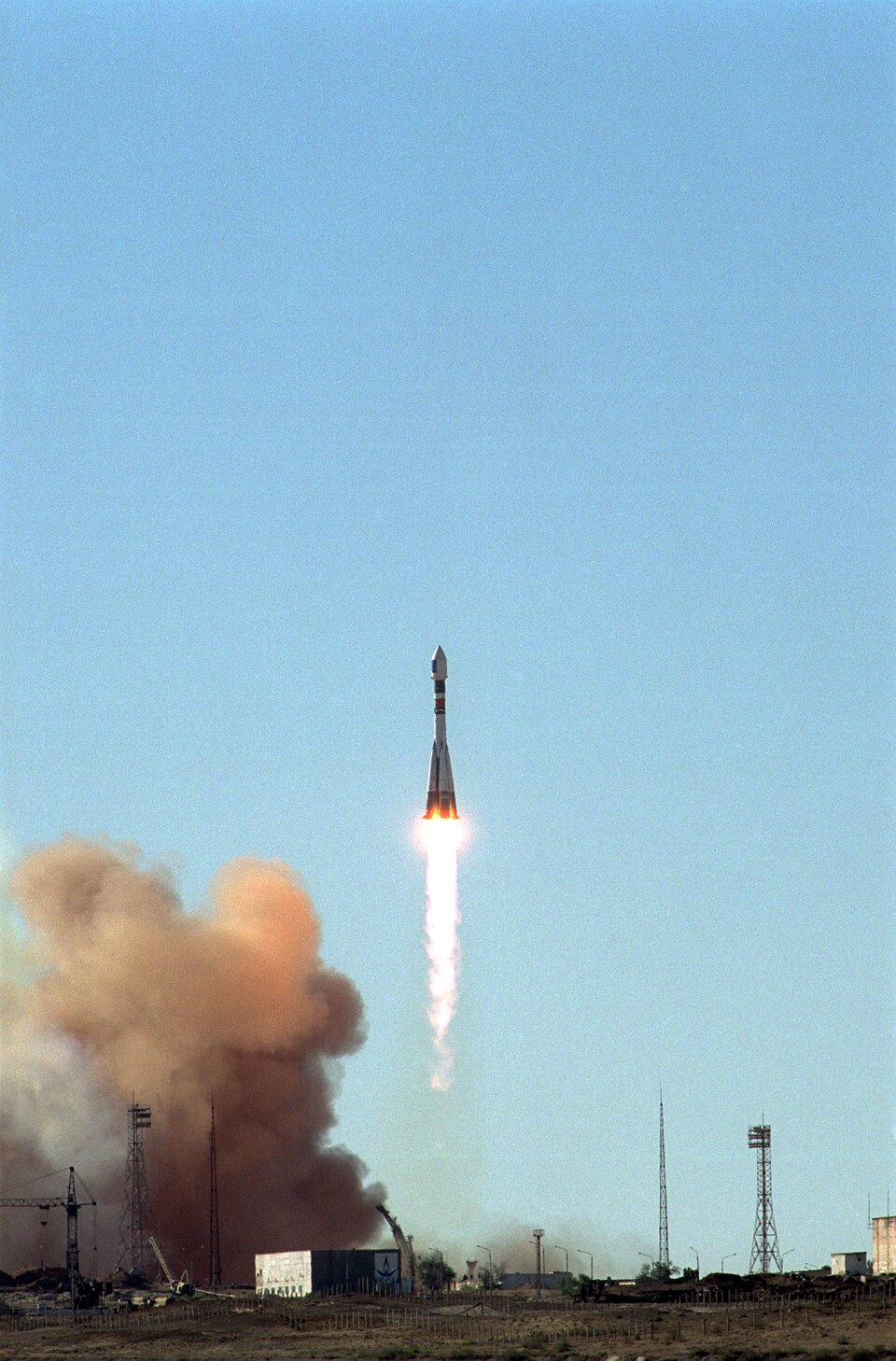
Cluster was launched by two Russian Soyuz rockets. The first pair of Cluster satellites lifted off on 16 July 2000 from the Baikonur Cosmodrome in Kazakhstan. The second pair was launched from the same location a month later.
Each pair was placed into an initial elliptical orbit that swept them from 200 to 18 000 km in altitude. Then they used their own onboard propulsion systems to reach the final operational orbit, another elliptical path around Earth from 19 000 to 119 000 km in altitude.
Over the years, Cluster’s maximum altitude gradually increased to above 130 000 km. To keep a good communications link with ground stations, the four spacecraft were lowered in November 2009. The current orbit takes them from a few hundred kilometres at closest approach to Earth to around 125 000 km at furthest.
History
The Cluster mission was first conceived in November 1982. The idea developed into a proposal and was approved as a mission in 1986. By 1996, Cluster was ready for launch.
Cluster was offered a 'free' launch on the first test flight of the newly developed Ariane 5 rocket. After several minor delays, Ariane 501 lifted off from Kourou, French Guiana on 4 June 1996, carrying its payload of four Cluster satellites. Unfortunately, intense aerodynamic loads resulted in its break-up and the initiation of the automatic destruct system. The launcher and the four Cluster spacecraft were totally destroyed.
To recover the unique science promised by the mission, ESA built one new Cluster satellite from spare parts prepared as part of the original Cluster mission in case any component failed and needed a last minute replacement before launch. A further three new spacecraft and their instruments were then commissioned from industry and the scientific community.
After a preliminary study, it was found that rather than using another Ariane 5 to launch all four satellites at once, two Soyuz rockets could be used to launch a pair of Cluster spacecraft at a time. However, the elongated orbit required by the mission dictated that a new upper stage would be required, and thus in 2000, two Soyuz rockets with newly developed Fregat upper stages lofted the new Cluster into space from Baikonur Cosmodrome.
Cluster was originally scheduled to return science data from February 2001 to January 2003 but, given its excellent performance, the ESA Science Programme Committee approved unanimously two extensions of the mission in February 2002 and February 2005, pushing back the end date to December 2009. In October 2009, the mission was extended again, until the end 2012. Another extension is currently being considered to take the mission on into 2014.
Partnerships
The prime contractor for both the original and replacement Cluster satellites was Dornier Satellitensysteme GmbH (now Astrium), Friedrichshafen, Germany. They led an industrial consortium of 35 major contractors from all the ESA member countries and the United States.
Each spacecraft carries an identical set of 11 instruments to investigate electrical and magnetic fields, and charged particles. These were built by European and American teams of scientists and engineers led by Principal Investigators.
The Cluster scientific community includes the ESA Project Scientist team, 11 Principal Investigators, and more than 250 Co-Investigators from ESA Member States, the United States, Canada, China, the Czech Republic, Hungary, India, Israel, Japan and Russia. The publicly accessible Cluster Active Archive is serving more than a thousand scientific users with all data sets at full time and spatial resolutions (http://caa.estec.esa.int).
xx





